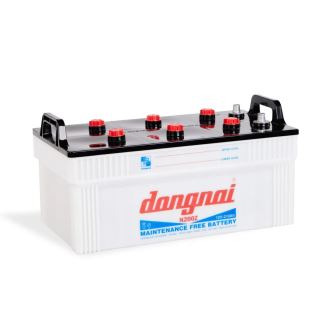from APC's White Paper 17, Revision 1 - Download
by Neil Rasmussen
Introduction
The terms power factor, crest factor, and surge factor refer to completely different and unrelated phenomena. These characteristics are often specified for UPS systems, and customers will sometimes place them in specifications.
Power factor
Power factor is a quantity which has important implications when sizing a UPS system and power distribution equipment. Power is a measure of the delivery rate of energy and in DC (direct current) electrical circuits is expressed as the mathematical product of Volts and Amps (Power = Volts x Amps). However, in AC (alternating current) power system, a complication is introduced; namely that some AC current (Amps) may flow into and back out of the load without delivering energy. This current, called reactive or harmonic current, gives rise to an “apparent” power (Volt x Amps) which is larger than the actual power consumed. This difference between the apparent power and the actual power gives rise to the power factor. The power factor is equal to the ratio of the actual power to the apparent power. The apparent power is expressed as the Volt-Amp or VA rating. Therefore, the actual power in any AC system is the VA rating multiplied by the power factor.
For many types of electrical equipment the difference between apparent power (VA) and actual power (Watts) is very slight and can be ignored, but for some computers the difference is very large and important. Many desktop personal computers present a nonlinear load to the AC supply. This is because they have a power supply design known as a "capacitor input switch mode power supply". In a study done by PC Magazine, it was found that typical personal computer systems exhibit a power factor of .65 which means that the apparent power (VA) was 50% larger than the actual power (Watts)!
Information technology (IT) equipment including servers, routers, hubs, and storage systems almost universally use a different power supply design known as "Power Factor Corrected". These devices present a very linear load to the AC supply and do not generate harmonic currents. In fact they are one of the cleanest loads on the power grid and generate less harmonic current than many other devices such as fluorescent lighting or variable speed motors. Ten years ago, these devices were nonlinear loads like personal computers, but today all of these loads are subject to international regulation IEC 1000-3-2 which require them to be made with the "Power Factor Corrected" design.
Sizing a UPS
To size a UPS and ensure that the UPS output capacity is sufficient, both the VA rating and the Watt rating of the load are important. The watt rating of the UPS relates to the amount of power it can deliver, and the VA rating of the UPS relates to the amount of current it can deliver. Neither the Watt nor the VA rating of the UPS can be exceeded. In practice, the best approach is to size a UPS the Watt rating of the load. This is particularly true for larger IT installations where the power factors of the loads are nearly 1. If there is confusion regarding power ratings or power factor, and it is desirable to ensure the load can be powered by the UPS, then choosing a UPS with a Watt rating greater than or equal to the VA rating of the load will always ensure a safety margin.
Power factor has an important implication in the specification of UPS run time on battery. Battery run time is dictated by the watt load on the UPS. However, when many UPS manufacturers specify run time at full load they are referring to full VA load, not the full watt load. For example, a UPS rated at 10,000 VA may be rated for 20 minutes of run time at full load. In the fine print it notes that this full load is at a .65 power factor. Therefore the load for the run time specification is really only 6500 Watts. The same UPS may have a 9000 W rating. This means that the run time was provided at 6500/9000 or 72% of the full load watt rating of the UPS. At 72% of the Watt rating the UPS may run almost 70% longer than at the real full load Watt rating. So this UPS which claimed to have 20 minutes of run time may only provide 12 minutes of run time at the true full load Watt rating. To overcome this confusion, always make sure run time specifications are based on Watt loads, and not VA loads.
Manufacturers of smaller desktop UPS often only include VA specifications for their UPS products. When the Watt rating of a UPS is not furnished, it can be very difficult to determine if the UPS is capable of supplying a specific load. Lower cost UPS products often have a Watt rating of 50% of the nameplate VA rating. This can cause confusion, for example a 1000 VA UPS that will not run a 600 W load (the Watt load rating is either not provided or in the fine print and in reality is only 500 W). In addition to their contribution to power factor, harmonics have other implications in power system design. These are discussed in detail in White Paper 26, Hazards of Harmonics and Neutral Overloads.
Crest factor
In addition to a low power factor, some computer loads are also unusual in that they exhibit a very high crest factor. Crest factor is the ratio between the instantaneous peak current required by the load and the RMS current (RMS stands for Root Mean Square, which is a type of average). Most common electrical appliances exhibit a crest factor of 1.4 (1.4 is the ratio of the peak value of a sine wave to its RMS value). Computers and IT equipment with Power Factor Corrected power supplies exhibit a crest factor of 1.4. Personal computers and stackable hubs exhibit a crest factor of 2 to 3.
When a load exhibits a crest factor of more than 1.4, the source (UPS) must supply the peak current desired by the load. If the source does not supply the current, then the source voltage will become deformed (distorted) by the excess peak current. Therefore, if a UPS is not sized to supply the crest factor desired by the load, the output voltage waveform of the UPS will be distorted.
The crest factor requirement of a computer load will vary depending on the source which it is supplied from. The crest factor may even vary when the computer load is moved from one AC receptacle to another in the same room. It is widely believed that the crest factor is an inherent characteristic of a computer load, when in fact crest factor results from an interaction between the load and the AC source. The crest factor required by a computer load depends on the AC source waveform. For a sine wave source, a non-power factor corrected personal computer will typically exhibit a crest factor of 2 to 3. For a source waveform which is a stepped approximation to a sine wave, as used in most UPS below 1 kW, a computer will exhibit a crest factor of 1.4 to 1.9.
The crest factor requirement of a computer load will vary depending on the source which it is supplied from. The crest factor may even vary when the computer load is moved from one AC receptacle to another in the same room. It is widely believed that the crest factor is an inherent characteristic of a computer load, when in fact crest factor results from an interaction between the load and the AC source. The crest factor required by a computer load depends on the AC source waveform. For a sine wave source, a non-power factor corrected personal computer will typically exhibit a crest factor of 2 to 3. For a source waveform which is a stepped approximation to a sine wave, as used in most UPS below 1 kW, a computer will exhibit a crest factor of 1.4 to 1.9.
The reduction in crest factor which occurs when a computer load is operated from a UPS, surge suppressor, or power conditioner is a positive side benefit, except if the reduction is accompanied by excessive distortion of the input voltage waveform to the computer load. Such distortion may result in a significantly reduced peak voltage being supplied to the load, which is equivalent to a brownout condition. The UPS or line conditioner must be designed to maintain the proper peak voltage.
Typical sine wave UPS systems such as the Schneider Electric Symmetra or Smart-UPS models have a crest factor capability of approximately 3 when operated at full load, 4 when operated at 1/2 load, and 8 when operated at 1/4 load. Typical smaller stepped wave models such as the APC Back-UPS have a crest factor capability of 1.6 at full load and 2 at 1/2 load. UPS systems with this performance will maintain the proper peak voltage into the computer load for computers with any input crest factor specification.
Lower quality UPS systems on the market have limited peak output current capability and consequently low crest factor performance and will distort the output voltage under personal computer loads. Typically this does not cause a malfunction with smaller PC installations. However in large multi-PC installations such as call centers can cause significant degradation of the UPS output waveform. In these cases it is not uncommon to see a UPS output waveform that is nearly a square-wave. This situation can cause various types of office machines to malfunction.
The fact that virtually all equipment installed in data centers today such as servers, routers, and storage devices are power factor corrected has virtually eliminated crest factor as a problem in the data center. Crest factor problems today are limited to call center or trading floor installations with a high density of personal computers.
Surge factor
This term is often mistakenly related to the surge suppression characteristic of a UPS or surge suppressor, which is a different and unrelated characteristic. Surge factor relates to the momentary overload capacity of the UPS and is a measure of the ability of the UPS to start-up loads which temporarily require extra power when they start-up. Examples of loads which have a high surge factor requirement include motors, compressors, and to a lesser extent disk drives.
For typical computer systems with hard disk drives, the surge factor required is approximately 1.15 times the steady-state power consumption. For large disk arrays, the surge factor required can be approximately 1.5 times the steady-state power consumption.
Conclusion
Most UPS systems today have sufficient crest factor and surge factor to meet virtually any requirement in a data room or data center. Therefore, their use in bid specifications is relatively unimportant.
Power factor remains a misunderstood subject, and ignoring or misapplying the power factor concepts can result in a number of problems, including: overestimation of UPS run time; incorrect comparison of run time between competitive products, and under sizing of UPS systems. The guidelines and warnings regarding power factor that are summarized in this paper can prevent these misunderstandings.







![APC RAIL KIT BRACKET L & R SMC RM ROHS [0M-77578]](/Image/_thumbs/File/APC/Railkit/Rail%20KIT%20BRACKET%20L%20%26%20R%20SMC%20RM%20ROHS%20%5B0M-77578%5D%20-1.jpg)

